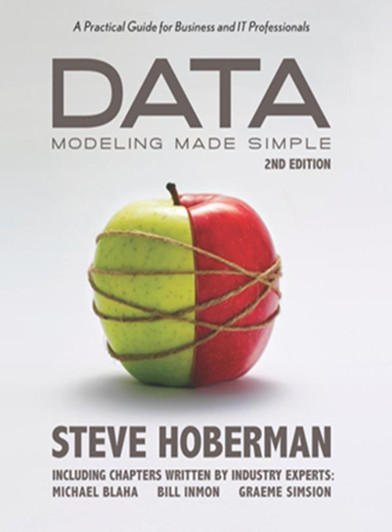Data Modeling Made Simple by Steve Hoberman provides an introductory to mid-level guide to the world of data modeling and database entry. I found the book easy to digest while not being overly verbose. If you know nothing about data modeling and need a guide, this book will get you started on the right path.
Data surround us. If you are a software engineer like me, you deal daily with data modeling questions. From simple API queries to storing and retrieving customers' statistics, the question is how we can capitalize this data to its maximum potential. But before we can leverage our data, we need to understand its relationships to our business rules.
Data Modeling is Data Communication. Hoberman understands this and will use real world examples to help busniess professionals and data novices to communicate their data in an impactful, organize manner. From the forward, Wayne W.Eckerson from the Data Warehousing Institue,
... a good data model serves as lingua franca between business and information-technoloy prpfessionals. It provides a shared understanding of the business that aligns business and technical professionals ...
If you don’t know why data models are so fundamental to business, then you are in the right place and maybe Data Modeling Made Simple is the right book for you start with.
Why do we need data models?
- We can use data models to understand an existing application or process.
- We can use them to manage risk by mapping out concepts and interactions.
- Good models help define business rules
- Eductate team memebers.
What does a good model have?
- Relationships, how all the pices fit together.
- Scope, adds clarity and focues to the model.
- Abstraction, great models have abstracted away unnecessary details.
Some of the skill you could develope or improve by reading this book.
- You will learn when a data model is needed, and which type of data model is most effective for each situation.
- You will he able to read a data model of any size and complexity with the same confidence as reading a book.
- You will be able to build a fully normalized relational data model as well as an easily navigable dimensional model.
- You will be able to apply techniques to turn a logical data model into an efficient physical design.
- You will be able to leverage several templates to make requirements gathering more efficient and accurate.
- You will be able to explain all ten categories of the Data Model Scorecard.
- You will learn practical advice on improving your working relationships with others.
- You will appreciate the impact unstructured data has and will have on our data modeling deliverables.
- You will learn basic UML concepts.
- You will be able to put data modeling in context with XML, metadata, and agile development.
If a picture is worth a thousand words then a good data model is priceless. Data modeling will help you define and organize any business process or application. The collaboration between high-level business processes and it technical implementation will become seamless.




Leave a Reply